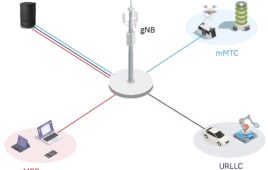Investment in the networks really does pay off in the long run, according to a new study from Ericsson released today.
The Swedish telecom equipment maker wanted to better understand the relationship between CapEx investments in infrastructure and what kind of return investors ultimately saw on those investments.
“We wanted to go deeper than the metric that analysts tend to monitor, which is CapEx as a percentage of revenue, and we asked is there any way that we can actually measure the return on carrier performance and looking at the impact that CapEx has,” said Dr. Raul Katz, President of Telecom Advisory Services LLC, and Director of Business Strategy Research at Columbia Business School. Ericsson commissioned Katz to do the research.
In an interview with Wireless Week, Katz said the study showed that CapEx is a critical variable that drives both a carrier’s topline, as well as return on investment.
While a fairly intuitive conclusion, the study does manage to prove out through the analysis of historical data that CapEx investments result in modernization of the network, in turn improving speed and latency, thus increasing a carrier’s market share and ARPU, and finally improving profits.
 “This wasn’t something we could ever prove before,” Katz said.
“This wasn’t something we could ever prove before,” Katz said.
Katz was most surprised by some of the variables the study highlighted. For instance, the percentage by which revenue and profits improved given increased CapEx varied across the three markets studied—Brazil, Mexico and the United States.
A 10 percent increase in CapEx resulted in a +5.5 percent increase in service revenues, and +6.6 percent increase in EBITDA for an operator in Brazil. In Mexico, however, the same increase in CapEx resulted in +1.9 percent increase in service revenues, and a 1 percent increase in EBITDA. The same increase in the U.S. resulted in a +5.1 percent increase in service revenues and a +6.8 percent increase EBIDTA.
Katz said that a big reason for the disparity between markets is the dynamics of a particular market. For instance, in Mexico, carriers’ reliance on voice revenues are still much larger than here in the United States.
“We found that while the relationships are always there, the degree of impact of each of these metrics changes across markets,” Katz said, “and that depends on market development, how pervasive is the market relying on wireless data, and secondly market structure.”
The study also offers some perspective on technologies like WiMax, where Sprint and Clearwire invested heavily in a first-to-market 4G technology which eventually was eclipsed by LTE.
“Well, there’s good CapEX and there’s bad CapEx,” Katz quipped, conceding that carriers need to be aware of the potential for technologies that they’re choosing to invest in.
When asked whether this research would lead to a follow up, Katz said he was very interested in comparing the differences in return from CapEx investment between an advanced Asian market and an emerging Asian market.
“The important thing is we have a methodology here, and that’s good,” Katz said. “So now it’s just a matter of applying it to other markets.”




